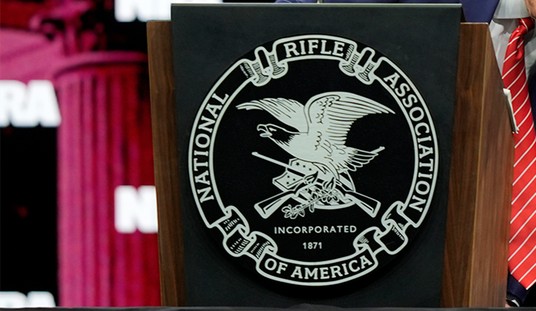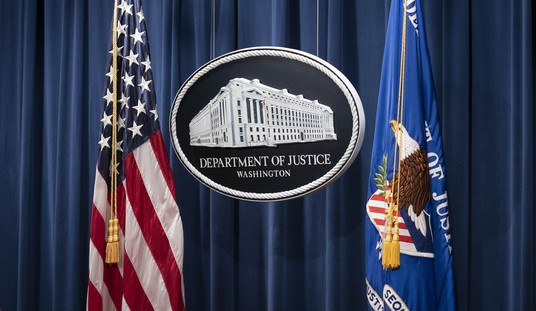Unfortunately, the conversation between FPC Action Foundation vice president and general counsel Cody J. Wisniewski took place before today’s Third Circuit decision in Lara v. Evanchick, so I wasn’t able to ask him about the court’s determination that adults under the age of 21 do indeed have the same right to keep and bear arms as older adults, but today’s Bearing Arms Cam & Co still features a great conversation… as well as Wisniewski’s thoughts on the Fourth Circuit’s premature “en bancinization” last week, where the court decided to take multiple cases en banc before a three-judge panel had a chance to issue their own opinions. One of those cases was Bianchi v. Brown, a challenge to Maryland’s ban on “assault weapons”. Oral arguments before a three-judge panel in that case were held in December of 2022, and gun owners had been waiting with increasing impatience for that panel’s decision ever since. With Bianchi now going en banc, that decision is now off the table.
“Surprise was definitely my first reaction,” Wisniewski said about the Fourth Circuit’s move, though he added that, “in a fit of optimism my next reaction was ‘well, this sets it up for the Supreme Court pretty damn well.”
“It’s certainly shocking. I mean, I haven’t really seen anything like this happen. It certainly hasn’t happened in a Second Amendment case like this in recent history, and even in broader constitutional litigation, property rights litigation, this is really rare.”
So what’s the motivation behind this almost unheard of action? Wisniewski isn’t a part of the Fourth Circuit and isn’t privy to any closed-door discussions among judges, but says there are a number of possibilities.
“It does seem like there’s the potential that there could have been conflicting opinions coming out in several cases, a conflicting methodology being developed by the different panels on the Fourth Circuit, and basically the en banc court just said ‘look, we’re gonna take and decide all these Second Amendment cases together and lay down the Fourth Circuit’s application of Bruen across the spectrum,” Wisniewski mused.
The good news is, theoretically at least, taking Bianchi en banc shouldn’t delay its return to the Supreme Court. Arguments are tentatively scheduled to take place in March, and Wisniewski notes that, so far anyway, the Fourth Circuit hasn’t requested any additional rounds of briefing. If the en banc court doesn’t sit on its own decision for a year or more, Wisniewski says it’s possible that Bianchi could be calendered by the Supreme Court later this year. Given what’s happened with Bianchi to date that may be a big “if”, unfortunately,
While the Fourth Circuit’s decision is frustrating, there’s still plenty of good news from the federal judiciary these days, including Thursday’s Third Circuit decision in Lara v. Evanchick.
The case was brought by several adults younger than 21 who argue their right to bear arms is being violated. Under Pennsylvania law you have to be 21 to obtain a concealed carry license, but adults under 21 can openly carry unless there’s a declared state of emergency. For almost three years the Keystone State was under different states of emergency; including the COVID pandemic, the opioid crisis, and a hurricane. Attorneys for the state had argued that this was just fine and dandy, since under-21s don’t have a right to carry in the first place, but the Third Circuit panel shot down that argument in no uncertain terms today. From the decision (citations omitted for readability):
Taking our cue from the Supreme Court, we have construed the term “the people” to cast a wide net. In Range v. Attorney General, we considered an as-applied challenge to the constitutionality of a federal statute that barred the defendant from purchasing firearms because of a state-level conviction for having made a false statement to obtain food stamps. We held that the Supreme Court’s past references to “law-abiding citizens” did not mean that a criminal conviction removes an American citizen from “the people.” We reasoned that “[u]nless the meaning of the phrase ‘the people’ [in the Constitution] varies from provision to provision – and the Supreme Court in Heller suggested it does not – to conclude that [the defendant] is not among ‘the people’ for Second Amendment purposes would exclude him from those rights as well.”
The Commissioner endeavors to argue around that conclusion by saying that, “[a]t the time of the Founding – and, indeed, for most of the Nation’s history – those who were under the age of 21 were considered ‘infants’ or ‘minors’ in the eyes of the law[,]” “mean[ing] that they had few independent legal rights.” True enough, from before the founding and through Reconstruction, those under the age of 21 were considered minors.
Notwithstanding the legal status of 18-to-21-year-olds during that period, however, the Commissioner’s position is untenable for three reasons. First, it supposes that the first step of a Bruen analysis requires excluding individuals from “the people” if they were so excluded at the founding. That argument conflates Bruen’s two distinct analytical steps. Although the government is tasked with identifying a historical analogue at the second step of the Bruen analysis, we are not limited to looking through that same retrospective lens at the first step. If, at step one, we were rigidly limited by eighteenth century conceptual boundaries, “the people” would consist of white, landed men, and that is obviously not the state of the law.
Second, it does not follow that, just because individuals under the age of 21 lacked certain legal rights at the founding, they were ex ante excluded from the scope of “the people.” As then-Judge Barrett explained, “[n]either felons nor the mentally ill are categorically excluded from our national community.” But “[t]hat does not mean that the government cannot prevent them from possessing guns. Instead, it means that the question is whether the government has the power to disable the exercise of a right that they otherwise possess.”
Third, consistency has a claim on us. It is undisputed that 18-to-20-year-olds are among “the people” for other constitutional rights such as the right to vote, freedom of speech, peaceable assembly, government petitions, and the right against unreasonable government searches and seizures. As we recently observed in Range, there is “no reason to adopt an inconsistent reading of ‘the people.’” Indeed, wholesale exclusion of 18-to-20-yearolds from the scope of the Second Amendment would impermissibly render “the constitutional right to bear arms in public for self-defense … ‘a second-class right, subject to an entirely different body of rules than the other Bill of Rights guarantees.’”
With that decided, the burden was on the state to come up with any statutes that would identify gun bans for young adults as part of the national tradition of our right to keep and bear arms. The state’s attorneys offered multiple statutes dating back to the mid-1800s, but the Fourth Circuit panel concluded that 1791, not 1868, is the more applicable time period in the Bruen test, and that the state had offered no evidence at all from that period save for a single ordinance adopted by the Pennsylvania colonial legislature in 1721 prohibiting “carry[ing] any gun or hunt[ing] on the improved or inclosed lands of any plantation other than his own[.]”
That’s hardly analogous to an outright ban on bearing arms based on an adult’s age, and the Fourth Circuit panel rightfully concluded that Pennsylvania had failed to make a convincing argument that the ban on under-21s carrying during a state of emergency is compatible with the Second Amendment. And though I didn’t have the opportunity to ask him about the Lara case, I can at least share Wisniewski’s reaction to the Third Circuit’s ruling.
"We applaud the Third Circuit’s decision in this case confirming that 18-to-20-year-old adults have the same right to armed self-defense as any other adult," said Cody J. Wisniewski, FPC Action Foundation’s Vice President and General Counsel, and counsel for FPC. "If it wasn’t…
— Firearms Policy Coalition (@gunpolicy) January 18, 2024
Despite the shenanigans that some courts may be playing with our Second Amendment rights, I think Wisniewski is right to be optimistic about the future of 2A litigation. Yes, we’re likely to see some outrageous and inexplicable decisions from judges going forward, but unless SCOTUS rejects its own test going forward, those abuses should largely be curbed when the justices finally do get their hands on cases involving “assault weapons” bans, “sensitive places”, and other common attacks on our right to keep and bear arms.








Join the conversation as a VIP Member